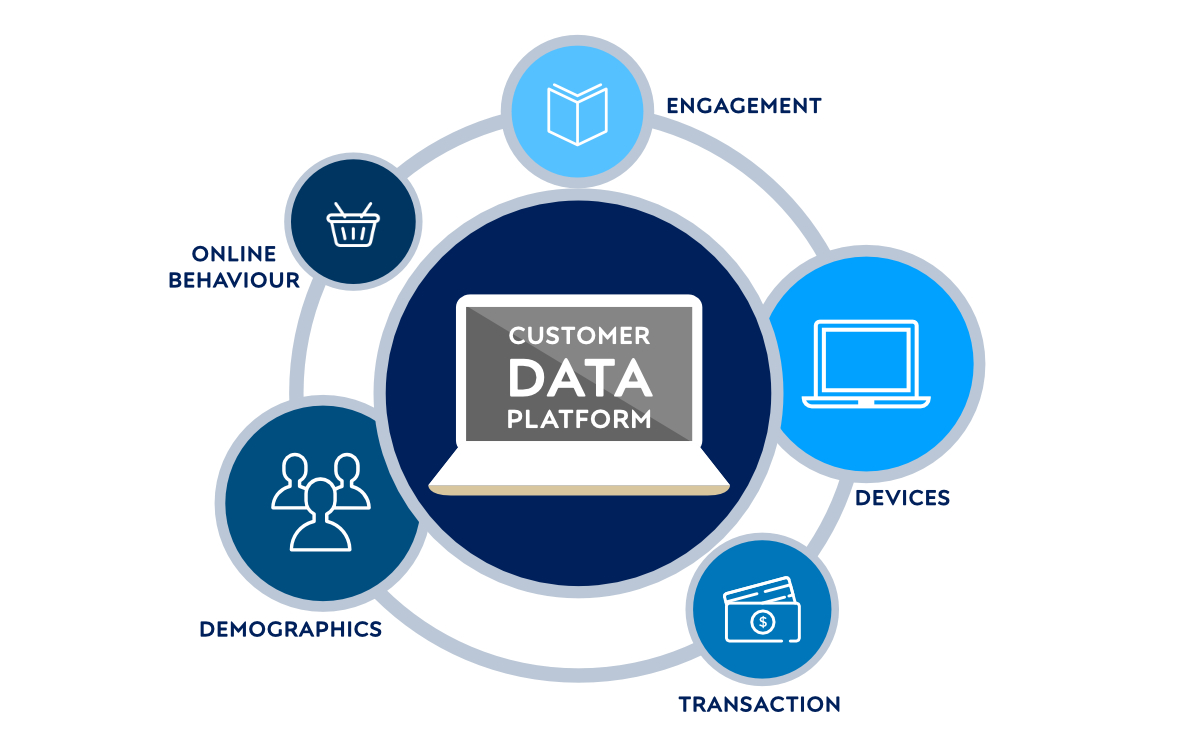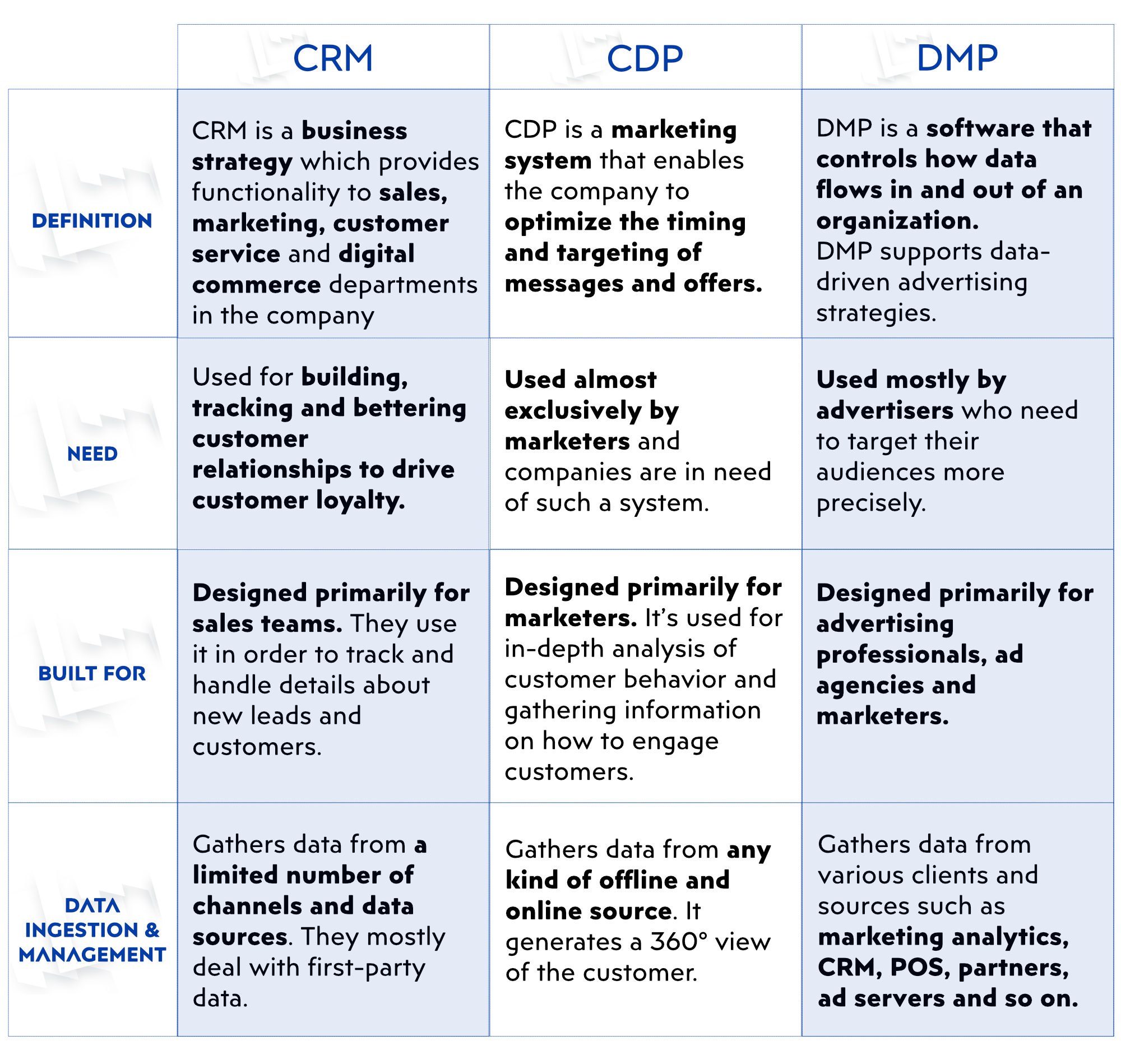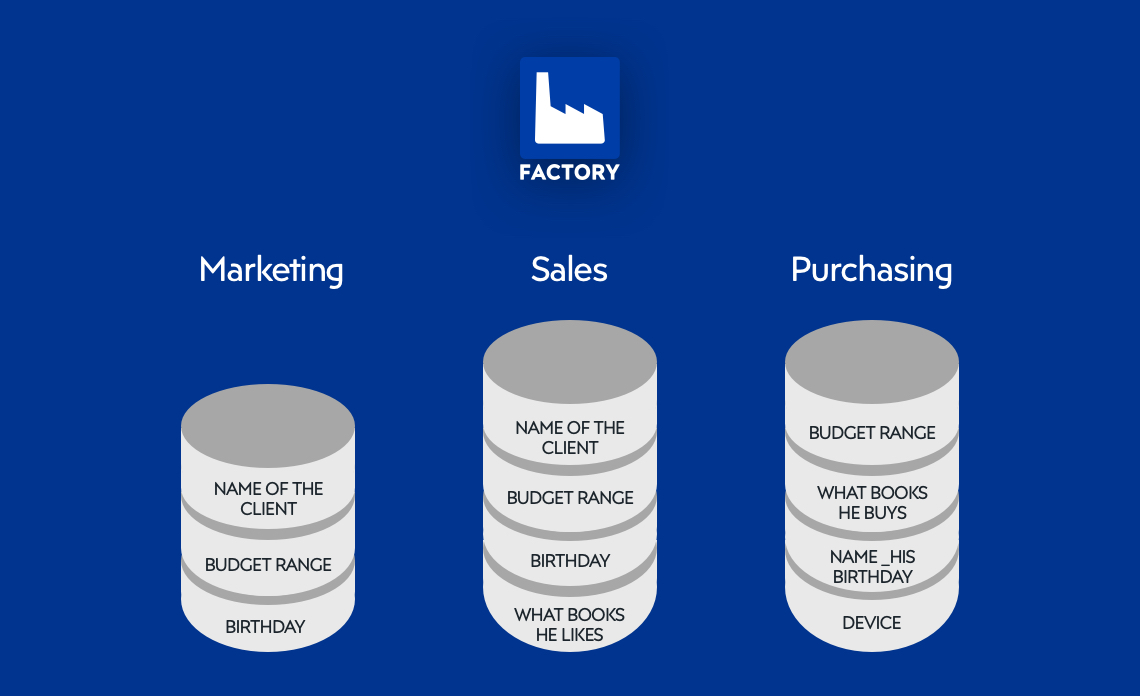Pimcore series: CDP - for smarter marketing campaigns
Customer data has never been more important.
Customers are now in the centre of every business activity. It’s no wonder that software such as Customer Data Platform (CDP) is gaining popularity.
You may have come across this term already. Maybe your boss asked you about CDP and wants to know if your company needs one. Or maybe you’re the boss asking yourself the same thing.
In this article you’ll find everything you need to know about CDP and what Pimcore’s customer data platform software can offer you.
If you’re ready to improve the quality of your customer data, reach out to us. We’re a professional Pimcore development company and we’re here to help you!
Without further ado, let’s dive right into CDP!
What is a customer data platform?

To be exact, it’s a database software.
It’s a perfect tool for marketers. “Why is that?” you may ask.
Well, a customer data platform is a software that creates a unified customer database that is accessible to other systems. CDP builds customer profiles by merging data from various sources. That includes first-party, second-party and third-party sources.
What it means is that customer profiles are supported by the data from your CRM, DMP, social media, website, emails, eCommerce behaviour data and so on. That’s a lot of data.
Marketers usually manage that data and they execute people-based marketing. They put the customer in the centre of their activities.
Not that long ago, customers were considered as an afterthought of a funnel. Through marketing and sales efforts, we get a customer as a result.
Now, things have changed. Customers are no longer considered to be an afterthought of the funnel. They are in the centre of a flywheel.
Pimcore’s customer data platform can help your company do the same. Unlike Pimcore’s product information management system, CDP analyzes customer data. Be it relevant or irrelevant – all of it.
What data does the customer data platform analyze?
That’s a great question!
Generally, there are four main kinds of customer data analyzed by customer data platform:
Identification data
Identification data is the most basic customer data. By collecting that type of data, you can identify each customer and avoid duplication of data. This includes information on:
- Name (first and last name)
- Location (country, city, street)
- Contact (phone number, email address)
- Demographics (age, gender)
- Social (social media account addresses)
- Accounts (account numbers and IDs)
- Professional experience (job title, company)
Descriptive data
Descriptive data expands on identity data. It provides you with a better understanding of your customer. This data varies from company to company.
For example, a company that’s selling animal accessories would try collecting information such as how many pets do you have.
On the other hand, a car dealership might want to know which cars you have.
There are 4 types of information included in descriptive data:
- Career (income, job level, previous jobs)
- Lifestyle (pets, cars, type of home)
- Family (children, marital status, number of family members)
- Hobby (current subscriptions, memberships)
Quantitative data
This type of customer data shows you how the customer interacts with your company. We can analyze our customers through their actions, reactions and transactions.
Quantitative data also includes 4 types of information:
- Customer service (dates and types of communication, certain questions and queries)
- Email communication (how many emails were opened, how many of them were responded to and when did it happen)
- Transaction (which products did the customer buy/return, when did it happen, how many times did the customers abandon their shopping carts)
- Online activity (how many clicks were on the website, how good is the engagement on social media, how many times was the product viewed)
Qualitative data
Lastly, we have qualitative data. They provide us with context. Customer data platform helps you to collect your customers’ attitudes, opinions, experiences. In essence, everything that’s either relevant or not relevant to your company. You get to know each customer.
Here we have information on customer’s:
- Attitude (What’s their favorite food, animal, form of communication even?)
- Opinion (How do they rate the product? What do they think about the company? Will they recommend us to their friends?)
- Motivation (why did they make a purchase, how did they decide to purchase from us and not the competition)
You can see that there is a lot of valuable information you can collect and analyze through customer data platforms. Try to collect information that’s specific to your company so you can use it in the most efficient way possible.
You may have noticed, there is a connection between CDP, CRM and DMP.
So, let’s clarify how CDP differs from others!
CDP vs. CRM vs. DMP – who wins?
CRM, DMP and CDP collect customer data for business purposes, but there are some core differences between them.
Let’s take a look at what are the definitions, business needs and purposes of each of them!

Essentially, customer relationship management systems communicate with customers by building continuous customer accounts to support different company-wide functions. They do not aggregate large quantities of various data sources.
Customer data platforms, on the other hand, integrate data from all types and from all sources, both structured or unstructured, external or internal. That way, a comprehensive view of customers can be chalked out for analytical purposes.
As for the data management platforms – they are associated with managing segments of customers with anonymous profiles. They assist marketers in storing data centrally, apart from enabling them with programmatic ad buying.
On the other hand, customer data platforms are associated with managing individual customers having a unique profile.
They can work with known personal data as well as with anonymous data. Their advanced integration algorithms transform user data into unified client profiles that remain consistent over time.
How does the customer data platform help my business?
Another great question. Each Pimcore’s module is unique and addresses some unique issue. For example, Pimcore’s content management system tackles may tackle with creating the best possible landing page.
At the meantime, Pimcore’s digital asset management module focuses on managing all of the company’s digital assets.
Well, Pimcore’s customer data platform points right at the customer data. Obvious, right?
Pimcore’s customer data platform has an amazing array of benefits in its data management arsenal. Let’s see what integration of CDP does for your business!
Provide seamless customer experience
Pimcore’s CDP gathers customer data and user profiles to build a unified customer information database.
That way, you can create holistic profiles of your customers and use them to execute personalized and relevant communication towards your customers.
But let’s get more specific.
Personalize your brand experience!
Pimcore’s customer data platform arms you with a single customer view that lays the groundwork for understanding the needs and habits of the customer.
In effect, this gives companies the ability to offer customers personalized brand experiences.
Engage your customers instantly!
Pimcore collects real-time customer data based on their behaviour and uses it to synchronize their actions on a range of channels. That way CDP can create highly applicable, interactive and seamless customer experiences.
Enable your business to go omnichannel!
With the support of its integrated customer database, Pimcore’s customer data platform enables consistency and interaction through automated, consistent messaging needed for impeccable omnichannel experiences.
Eliminate data silos

Customer data easily gets scattered across the organization. It’s usually housed in separate systems and departments. Sometimes customer data resides with different individuals.
That’s called a data silo.
Data silo is a repository of fixed data that remains under the control of one of the departments and is usually isolated from the rest of the organization.
That means that the data your marketing department gathers isn’t accessible to your sales department, or IT department.
That way, your processes tend to get slower. Sometimes data isn’t up-to-date so wrong decisions are easily made.
To avoid more costs and losses, Pimcore’s customer data platform eliminates the data silos. It eliminates them through centralization and standardization of data.
When the data is gathered is one central point, it’s possible to have deeper insights and perform better analysis. All that with the goal of executing smarter marketing campaigns and improving your efficiency.
But let’s outline some concrete benefits.
Unify customer data!
Pimcore’s customer data platform creates a centralized data source by combining, auditing, and eliminating duplicates. It creates a reliable, accessible and dynamic single view of the customer.
Collaborate better with your team!
Pimcore’s customer data platform nurtures teamwork by eliminating data silos. That way, CDP allows teams to act as unified units.
This coordination is the basis for the implementation of specific goals for teams such as product, marketing, service, distribution, customer satisfaction and operations.
Speed up your operations!
Data silos can disrupt an organization’s overall pace and efficiency, as valuable time is invested in deciphering the data.
Since a customer data platform unifies all the data, it is available to all departments at the same time when they need it.
Enhance customer loyalty
Pimcore’s customer data platform does much to improve overall customer loyalty. It provides customers with a personalized and consistent experience.
Thanks to CDP, marketers can track customer behaviour and their preferences. Nurturing this kind of customer relationship lays the foundation for personalized communication and long-term loyalty.
If you’re using mobile apps to communicate with your customers, take advantage of mobile app loyalty programs to strengthen your relationship.
Either way, let’s see what exactly Pimcore’s customer data platform does to improve customer loyalty.
Unify your customer profiles!
Customer data platform gathers data at the individual level. Then, customer attributes are connected to their identities, providing us with a complete overview of the customer.
Multiple devices are linked to a single user and that way there is no duplication of data.
Segment your customer base!
Pimcore’s customer segmentation creates customer objects, each filled with customer information. Customer data platform handles the segmentation based on all of the recorded customer activities, data and other available criteria.
Get a full overview of your customers!
CDP offers a bird’s eye view of all customer objects, by gathering all customer information, and also provides a range of search and filter features.
Improve relations with your partners!
Customer-derived knowledge not only empowers staff and clients of companies, but also the entire network that involves suppliers, distributors, and those connected with the program.
Partners and vendors can get easy access to secure, seamless information with the help of a customer data platform.
In addition, the dialogue between company stakeholders, suppliers, and partners is much more constructive, focused, and insight-driven. This requires accountability outside the walls of businesses to support the entire ecosystem.
Pimcore’s customer data platform ensures the customer data is consistent and complete. It helps you make smarter decisions. But there are some specific benefits we’d like to outline.
Data transparency
The integration of customer data across business systems contributes to data reliability and allows for greater accountability and targeted interactions.
This helps to identify revenue-generation and cost-saving opportunities.
Improved accuracy
Both partners and vendors also receive unified and segmented data. This enables them to deliver smarter marketing campaigns and improve their overall data management!
All in all, Pimcore’s customer data platform comes with loads of benefits. It’s designed to suit the needs of a modern-day marketer. It allows you to optimize your marketing efforts for mobile commerce.
Not to mention that the number of voice searches is growing rapidly. More than 50% of all internet searches will be done using voice search by the end of 2020! Pimcore’s CDP covers both aspects. It lets you focus on what matters – your customers.
Now, let’s see how CDP functions on a live example!
Sports retailer giant uses Pimcore’s customer data platform!
Video by: Intersport Austria
Intersport Rent is a service provided by one of the most popular sports retailers – Intersport! Intersport has now more than 800 operating shops across Europe and Canada.
The platform enables customers to reserve their equipment online and then just simply pick it up in the store.
A third of the Intersport’s revenue is already generated by Intersport Rent and it handles more than 3 million customer profiles.
The whole Intersport Rent system was built on Pimcore and one of the key elements of this solution was the customer data platform.
On this portal, customers can now search for their ski-resort or desired destination and reserve their equipment online. They need to input the time-frame of their trip and select the product which they want to reserve.
When they arrive at the destination, their equipment is waiting for them.
By implementing the customer data platform and connecting the platform to all offline sales channels, Intersport was able to create a unified base of customer profiles.
How does this benefit the customer?
This benefits the customer in a very simple way. They don’t have to enter their personal data again when they want to rent their equipment. Also, customers save themselves time as everything is done online before their trip even begins.
As for Intersport, they improved their utilization forecasts regarding staff and equipment.
The impact of this solution was huge. Since 2011, more than 265,000 equipment rentals have been processed in the Pimcore system. Intersport achieved more than 300,000 reviews of their service and most of the reviews were positive.
Online sales are still growing. In Germany, Intersport saw a spike in their sales numbers, increasing their sales up to 50%!
Intersport is planning on utilizing more Pimcore features in the future. With every new update, Pimcore is gaining more and more popularity. Many successful companies such as Intersport are already experiencing the benefits of Pimcore solution implementations.
You’d like to join these successful companies and learn more about Pimcore and it’s customer data platform?
We’ve got you covered!
I want to use the customer data platform!
If you’ve come this far, you’re serious about using CDP in your business! You may now even have a specific idea on how you can leverage customer data in your business.
That’s great! You’re looking to improve your marketing efforts and make them more efficient! Now, let’s get started!
The whole point of CDP is to improve your data quality which you can use to generate more revenue, lower expenses and bring in more happy customers.
If you take another look at the Intersport Rent example, you can see that they connected both online and offline data sources. And by doing that – customer data analysis becomes much easier.
So let’s not wait anymore and – let’s do it! Contact us and we will guide you throughout the whole process of implementing Pimcore solution in your business!
Hundreds of companies are already writing their Pimcore success stories and now you too can join them.
Reach out to us and we’re already on it!